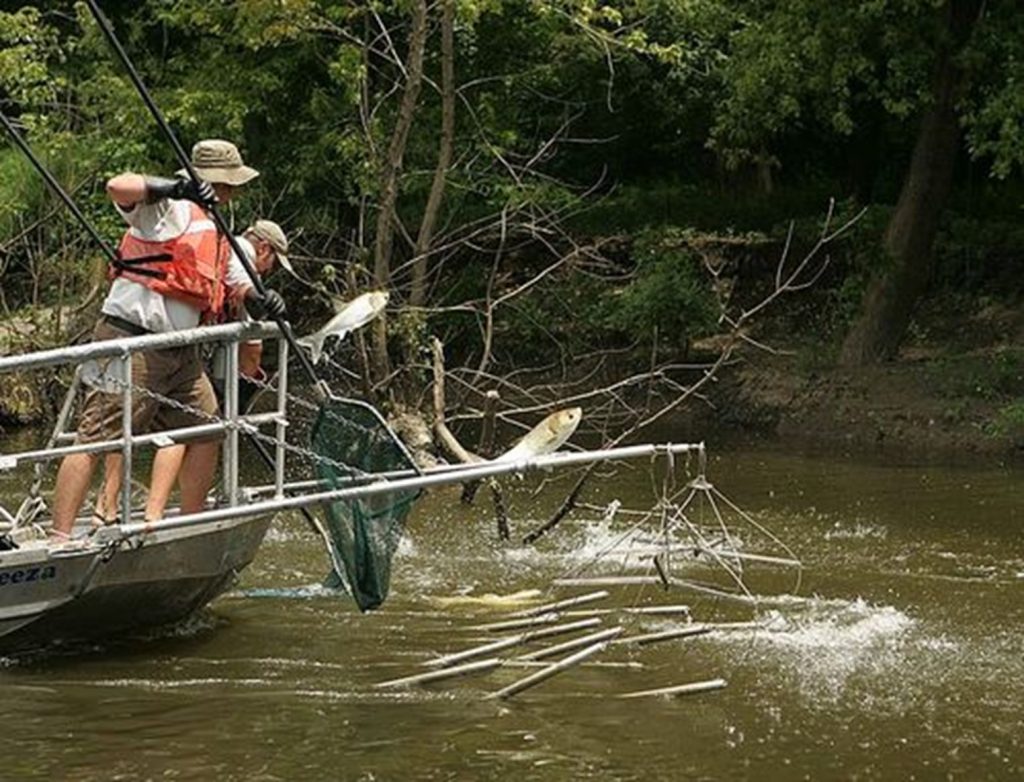Chapter 4: Community & Population Ecology

Imagine sailing down a river in a small motorboat on a weekend afternoon; the water is smooth, and you are enjoying the sunshine and cool breeze when suddenly you are hit in the head by a 20-pound silver carp. This is a risk now on many rivers and canal systems in Illinois and Missouri because of the presence of Asian carp. This fish—actually a group of species including the silver, black, grass, and big head carp—has been farmed and eaten in China for over 1,000 years. It is one of the most important aquaculture food resources worldwide. In the United States, however, Asian carp is considered a dangerous invasive species that disrupts ecological community structure to the point of threatening native species. The effects of invasive species (such as the Asian carp, kudzu vine, predatory snakehead fish, and zebra mussel) are just one aspect of what ecologists study to understand how populations interact within ecological communities, and what impact natural and human-induced disturbances have on the characteristics of communities.
Learning Outcomes
After studying this chapter, you should be able to:
- Describe how ecologists measure population size and density
- Describe three different patterns of distribution within or between populations
- Give examples of how the carrying capacity of a habitat may change
- Explain how humans have expanded the carrying capacity of their habitat
- Discuss the long-term implications of unchecked human population growth
Chapter Outline
- 4.1 Community Ecology
- 4.2 Population Dynamics and Demographics
- 4.3 Population Growth & Regulation
- 4.4 The Human Population
- 4.5 Chapter Resources
Attribution
Essentials of Environmental Science by Kamala Doršner is licensed under CC BY 4.0. Modified by Joni Baumgarten.
Concepts of Biology by OpenStax is licensed under CC BY 4.0. Modified by Joni Baumgarten.

